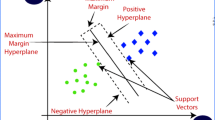Abstract
In law enforcement applications such as surveillance and forensics, video is often presented as evidence. It is therefore of paramount importance to establish the authenticity and reliability of the video data. This paper presents an intelligent video authentication algorithm which integrates learning based Support Vector Machine classification with Singular Value Decomposition watermarking. During video capture and storage, intrinsic local correlation information is extracted from the frames and embedded in the frames at local levels. Tamper detection and classification is performed using the inherent video information and embedded correlation information. The proposed algorithm is independent of the choice of watermark and does not require any key to store. Further, it is robust to global tampering such as frame addition and removal, local attacks such as object alteration and can differentiate between acceptable operations and malicious tampering. Experiments are performed on an extensive database which contains non-tampered videos and videos with several types of tampering. The results show that the proposed algorithm outperforms existing video authentication algorithms.
Similar content being viewed by others
References
Bhattacharjee, S., & Kutter, M. (1998). Compression tolerant image authentication. In Proceedings of IEEE international conference on image processing (Vol. 1, pp. 435–439).
Celik, M. U., Sharma, G., Tekalp, A. M., & Saber, E. (2002). Video authentication with self recovery. In Proceedings of security and watermarking of multimedia contents (Vol. 4314, pp. 531–541).
Cross, D., & Mobasseri, B. G. (2002). Watermarking for self authentication of compressed video. In Proceedings of IEEE international conference on image processing (Vol. 2, pp. 913–916).
Diffie, W., & Hellman, M. E. (1976). New directions in cryptography. IEEE Transactions on Information Theory, 22(6),644–654.
Ditmann, J., Steinmetz, A., & Steinmetz, R. (1999). Content based digital signature for motion pictures authentication and content fragile watermarking. In Proceedings of IEEE international conference on multimedia computing and systems (Vol. 2, pp. 209–213).
He, D., Sun, O., & Tian, O. (2003). A semi fragile object based video authentication system. In Proceedings of international symposium on circuits and systems (Vol. 3, pp. 814–817).
He, D., Sun, O., & Tian, O. (2004). A secure and robust object-based video authentication system. EURASIP Journal on Applied Signal Processing, 14, 2185–2200.
Kong, W., Yang, B., Wu, D., & Niu, X. (2006). Blind video watermarking algorithm. In Proceedings of international conference on innovative computing, information and control (pp. 265–268).
Kovesi, P. D. (1999). Image features from phase congruency. Journal of Computer Vision Research, 1(3).
Latechi, L., Wildt, D., & Hu, J. (2001). Extraction of key frames from videos by optimal color composition matching and polygon simplification. In Proceedings of multimedia signal processing (pp. 245–250).
Lin, C. Y., & Chang, S. F. (1999). Issues and solutions for authenticating MPEG video. SPIE Electronic Imaging Security and Watermarking of Multimedia Contents, 3657, 54–65.
Lu, C. S., & Liao, H. Y. M. (2003). Structural digital signature for image authentication: an incidental distortion resistant scheme. IEEE Transactions on Multimedia, 5(2), 161–173.
Mobasseri, B. G., & Evans, A. E. (2001). Content dependent video authentication by self water marking in color space. In Proceedings of security and watermarking of multimedia contents III (Vol. 4314, pp. 35–46).
Pramateftakis, A., Oelbaum, T., & Diepold, K. (2004). Authentication of MPEG-4-based surveillance video. In Proceedings of IEEE international conference on image processing (Vol. 1, pp. 33–37).
Queluz, M. P. (1998). Toward robust, content based techniques for image authentication. In Proceedings of IEEE second workshop on multimedia signal processing (pp. 297–302).
Quisquater, J. (1997). Authentication of sequences with the SL2 hash function application to video sequences. Journal of Computer Security, 5(3), 213–223.
Singh, R., Vatsa, M., & Noore, A. (2006). Intelligent biometric information fusion using support vector machine. In M. Nachtegael, D. V. Weken, E. E. Kerre, & W. Philips (Eds.), Soft computing in image processing: recent advances (pp. 327–350). Berlin: Springer.
Sun, Q., Chang, F. S., & Maeno, K. (2002). A new semi fragile image authentication framework combining ECC and PKI infrastructure. In Proceedings of IEEE international symposium on circuits and systems (Vol. 2, pp. 440–443).
Sun, Q., He, D., Zhang, Z., & Tian, Q. (2003). A secure and robust approach to scalable video authentication. In Proceedings of international conference on multimedia and expo (Vol. 2, pp. 209–212).
Thiemert, S., Sahbi, H., & Steinebach, M. (2006). Using entropy for image and video authentication watermarks. In Proceedings of SPIE security, steganography, and watermarking of multimedia contents VIII (Vol. 6072, pp. 470–479).
Uehara, T., Naini, R. S., & Ogunbona, P. (2004). An MPEG tolerant authentication system for video data. In Proceedings of IEEE international conference on multimedia and expo (Vol. 2, pp. 891–894).
Vapnik, V. N. (1995). The nature of statistical learning theory. Berlin: Springer.
Wohlmacher, P. (1998). Requirements and mechanism of IT-security including aspects of multimedia security. In Proceedings of multimedia and security workshop at ACM multimedia (p. 11).
Yan, W. Q., & Kankanhalli, M. S. (2003). Motion trajectory based video authentication. In Proceedings of international symposium on circuits and systems (Vol. 3, pp. 810–813).
Yin, P., & Yu, H. H. (2001). Classification of video tampering methods and countermeasures using digital watermarking. In Proceedings of SPIE multimedia systems and applications IV (Vol. 4518, pp. 239–246).
Zhao, L., Qi, W., Li, S., Yang, S., & Zhang, H. (2002). Key frame extraction and shot retrieval using nearest feature line (NFL). In Proceedings of international workshop on multimedia information retrieval. In conjunction with ACM multimedia conference (pp. 217–220).
Author information
Authors and Affiliations
Corresponding author
Rights and permissions
About this article
Cite this article
Singh, R., Vatsa, M., Singh, S.K. et al. Integrating SVM classification with SVD watermarking for intelligent video authentication. Telecommun Syst 40, 5–15 (2009). https://doi.org/10.1007/s11235-008-9141-x
Published:
Issue Date:
DOI: https://doi.org/10.1007/s11235-008-9141-x




